Conference Program
Day 2: Wednesday, March 5
New York 1
Sustainability and the circular economy in the tire industry - Day 2
09:00 - 15:15
Moderator
 Stephan Rau
Stephan RauTechnical director
wdk – Wirtschaftsverband der deutschen Kautschukindustrie eV
Germany
09:00
rCB volume update and its suitability for tire manufacturers
 Yogesh Gaikwad
Yogesh GaikwadTechnical consultant for carbon black
Weibold Consulting
Austria
The tire pyrolysis industry has been gaining a lot of momentum. There are confirmed projects in Europe which will see increases in recovered Carbon Black supplies from 62,400 to 693,900 tons within this decade. The presentation will give an update about the serious projects/volumes/timelines on the one hand, and an overview of the progress and success the rCB manufacturers have with supplying rCB to the tire industry and related industries. It will also discuss barriers of entry (looked at from both sides: from the tire manufacturer's and from the rCB manufacturer's point of view).
What the audience will learn
- The tire pyrolysis industry is rapidly growing, with confirmed projects in Europe set to increase recovered Carbon Black (rCB) supplies from 62,400 to 693,900 tons within this decade.
- Updates will be provided on key projects, including volumes and timelines, showcasing the industry's progress.
- An overview will be given on the success of rCB manufacturers in supplying recovered Carbon Black to the tire and related industries.
- Barriers to entry will be explored from both the tire manufacturer’s and the rCB manufacturer’s perspectives.
- The presentation will highlight the challenges and opportunities within the tire pyrolysis industry. I hope this helps
09:25
Michelin motorsport: a more sustainable tire with 71% renewables
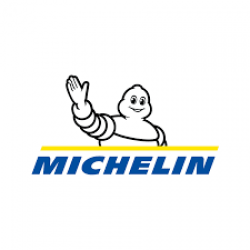 Romain Bricaud
Romain BricaudMotorsport tire design engineer
Michelin
France
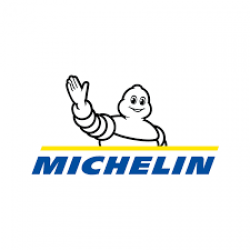 Pierre Tregouet
Pierre TregouetTechnical leader for material design, motorsport
Michelin
France
Michelin believes that tomorrow everything will be sustainable. To achieve this, Michelin's research centers are focusing on key levers to significantly reduce the environmental impact of tires. The introduction of renewable or recycled material in tire design – without compromising performance – is part of this exciting challenge. The new raw materials require intensive research to understand their behavior and how they can be used efficiently. And what could be better than a few laps on track to demonstrate how they perform? Michelin proposes to share the latest version of its sustainable demonstrator tire.
What the audience will learn
- Sustainability is compatible with motorsport activity
- Motorsport is an amazing laboratory for Michelin
- Renewable or recycled materials are now used in Michelin's motorsport tires with a high level of performance
- Integrating these new raw materials is not easy!
09:50
Sustainmax – agri tire with more than 80% sustainable material
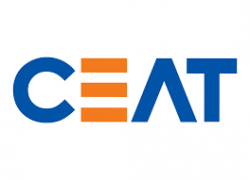 Vivek Purohit
Vivek PurohitGeneral manager, R&D
CEAT Limited
India
'Sustainmax' is a high-end VF tire with 81.0% sustainable material, designed by CEAT, keeping VF tire properties like soil compaction, fuel efficiency, tear resistance and load carrying capacity intact. The Sustainmax tire has been designed with renewable bio-sourced raw materials such as natural rubber, rice husk silica [RHS] and bio-based resin, as well as recycled material such as recovered carbon black, reclaimed rubber and polyester from scrapped PET bottles. It is designed to deliver the same load carrying capability as a regular VF tire. Additionally, the tire footprint is similar to the CEAT regular VF tire, which ensures a low level of soil compaction.
What the audience will learn
- Overview of sustainable materials for tire manufacturing
- Sustainable material that can be used in agri tires
- Workable compounding solution with a significantly high sustainable percentage
- Challenges and learning for making agri tire with highest-possible silica content
- Field performance of Agri tire with more than 80% sustainable material content
10:15
ZIM network: new uses for rubber powder from used tires
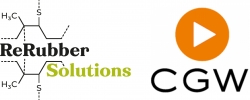 Anna-Maria Guth
Anna-Maria GuthCEO
CGW GmbH
Germany
The newly founded ZIM rubber powder network has set itself the goal of developing new ways of using rubber granulate. The association of medium-sized companies in Germany, as well as several universities, is funded by the state to initiate research and development projects that significantly change the recycling of used tires. The presentation will introduce the network to those present, reporting on research approaches and the current state of affairs.
What the audience will learn
- Goals and visions of the network
- Current research and development approaches of the network
- Potential for using rubber granulate from used tires
- Status of the circular economy for tires
- Rubber asphalt potential in Europe
10:40 - 11:10
Break
11:10
Sustainable tires – a sufficiently clear definition?
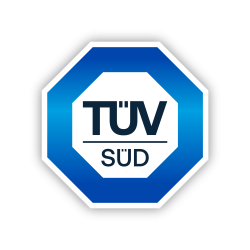 Dr Jonas Johannisson
Dr Jonas JohannissonSustainability program development manager
TÜV Süd Product Service GmbH
Germany
Regulation and supply chain requirements increasingly push sustainability criteria to be fulfilled. This may include circular economy claims such as renewable or recycled content, but also CO2 emissions of upstream supply chains (Scope 3). However, gaps exist in the field of correctly assessing upstream supply chains in order to correctly develop a claim to be associated with the end product. Various methodologies are described in standards, which can be a foundation for calculating claims for the tire material fractions. However, harmonization is lacking. Single manufacturers of tire components are taking the lead in developing their own rules, but acceptance in the overall tire composition is questionable. A further discussion point is the acceptance of mass balancing and the sub-methods in order to simplify chain-of-custody consideration. TÜV Süd gives some insight into the discussion on how green claims about tires can be correctly stated and what developments in standardization and regulation are currently underway.
What the audience will learn
- Understand the basics and challenges coming with Green Claims directive and interlinked regulation
- Get insights into standardisation landscape for tire material claims and status quo of harmonization
- Outlook on the standards projects currently ongoing
11:35
The trade-offs of going green – the impact of extending bio-components in tires
 Dr Tamara Markova
Dr Tamara MarkovaStrategy advisor
Biolanic Sp. z o.o.
Poland
Global ecological trends are requiring that tires and rubber become more sustainable. This reflects not only the transition from mineral-based to bio-based components but also extends to the share of renewable-based components used in tires and rubber. Some monitoring of this trend shows that is it not revolutionary but a gradual evolutionary transition. The reasons for this are the lack of an industry standard for some important renewable components, as well as tire makers' need to keep tire properties at the same or better level. Should tire makers move quicker in this transition or carefully continue, step by step?
What the audience will learn
- Evolutionaty transition
- Improvement of tire wet and grip properties
- Tire rolling resistance improvement
- Carbon footprint decrease
- ISCC certification
12:00
Aiming For industry standardization on carbon black product carbon footprints
 Andre Yvon-Bessette
Andre Yvon-BessetteCorporate product sustainability/LCA manager
Cabot Corporation
USA
To achieve Cabot’s purpose of creating materials that improve daily life and enable a more sustainable future, it continues to drive technology innovations to achieve the 2050 Net Zero Ambition. In addition to Cabot, most tire manufacturers also have ambitious decarbonization goals. With an increasing need for product carbon footprints (PCFs) to inform business decisions, the carbon black industry needs improved transparency and data quality to ensure consistent reporting to downstream industries. This presentation will focus on the challenges and opportunities that the carbon black industry faces when calculating PCFs and the downstream impact on the tire industry.
What the audience will learn
- An update on Cabot’s sustainability journey to achieve Net Zero by 2050
- Current and future state for carbon black product carbon footprints across the industry
- PCF assumptions that can cause significant variations in the results for carbon black
- The importance of carbon black industry alignment on product category rules (PCRs) and the impact on the tire industry
12:25
Sorting for better recycling
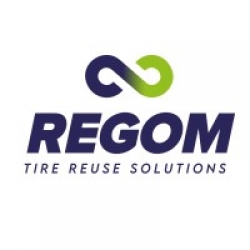 Bertrand Thoumsin
Bertrand ThoumsinSales manager - Europe area
Regom
France
Tire recyclers such as granulators, devulcanizators or pyrolyzers often face a significant challenge related to the consistency of the raw materials (inputs), irrespective of the recycling technology employed. Tire sorting involves the systematic separation, identification and catagorization of used tires into distinct grades. Understanding the composition of your inputs is key to enhancing the overall quality of the final product. Additionally, leveraging appropriate technology allows for more precise control over the entire process. The question arises: how can we revolutionize the sorting and identification process? Moving away from manual sorting toward automated sorting represents a promising solution.
What the audience will learn
- Process: How can we sort 1,200 tires an hour?
- Applications: What do we do with sorted tires?
- Traceability: How can we bring traceability to tire recycling?
- Improving flow quality: How can we improve the quality of output flows?
- HR optimization: How can we address the workforce issue?
12:50 - 14:00
Lunch
Moderator
 Anna-Maria Guth
Anna-Maria GuthCEO
CGW GmbH
Germany
14:00
Michelin presents araminolic resins technology, a safer alternative to RFL bonding systems, available for the tire industry
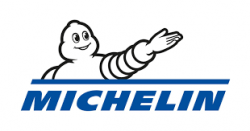 Laurent Lemonnier
Laurent LemonnierCEO
Michelin ResiCare
France
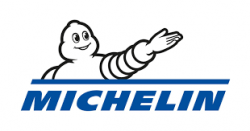 Thierry Egraz
Thierry EgrazResin industrializer
Michelin ResiCare
France
Industrial adhesive resins contain petro-sourced compounds, some of which, classified as SVHC ('substance of very high concern', as defined by the ECHA regulation), require strict precautions to avoid any danger to human health (e.g. formaldehyde, resorcinol, isocyanates).
Michelin ResiCare, a Michelin Group entity, presents araminolic resins innovation, among which is Resi4 TEX, a high-performance resin for textile dipped fabrics in tires, free of formaldehyde and resorcinol. Michelin ResiCare is a business continuity management solution regarding the European directive on the replacement of CMR substances, paving the way for perennial chemistry and safer products for health and the environment.
What the audience will learn
- How the regulatory context is moving us toward RF-free alternatives
- What is araminolic chemistry, a Michelin innovation open to all the tire market?
- How to take part in the journey alongside the industry pioneers
- Why is this technology technically viable and ready to be deployed to create the next generation of fabrics?
14:25
The performance of the bio-based tread enhancement additives in PCR
 Jochem Vervelde
Jochem VerveldeScientist
Kraton Pine Chemical
Netherlands
The tire industry has the ongoing challenge of meeting high-performance requirements while achieving sustainability targets. Tread enhancement additive (TEA) technology from Kraton offers solutions to this complex issue. Kraton invites you to gain insights into optimizing formulations for target performance through the latest advancements in sustainable TEA across various tire tread formulations.
What the audience will learn
- How to use TEA to achieve the performance of next-generation tires
- What effect formulation changes have on the desired performance
- How to formulate to achieve next-level performance
- How to achieve the optimal compound matrix
- What Kraton products can offer in flexibility to compounders
14:50
Solvay Silica in non-tread parts of the tire for better performance and CO2 footprint
 Dr Thomas Chaussée
Dr Thomas ChausséeR&I manager and global technical marketing manager
Solvay
France
Solvay Silica continues to offer innovative precipitated silica grades to reduce the environmental impact of the tire during its lifecycle, thanks to new grades improving wear and rolling resistance. Beyond performance, Solvay develops circular and low-CO2 products like its RHA production in Europe by 2025. To go further, Solvay has evaluated compound formulation optimization using specialty silica grades to partially replace carbon black in tread and non-tread applications for PC and truck tires to further reduce the tire CO2 footprint.
What the audience will learn
- Speciality precipitated silica performances in tread and non-tread for PC and truck
- How to go further in tire CO2 footprint reduction thanks to non-tread silica compounds
- Solvay portfolio for performance, circularity and low CO2
15:15 - 15:45
Break
New York 1
Innovations and best practices for advanced manufacturing and inspection - Day 2
15:45 - 17:25
Moderator
 Anna-Maria Guth
Anna-Maria GuthCEO
CGW GmbH
Germany
15:45
Innovative technology promoting the sustainable development of tires
 Huili Yang
Huili YangVice president and director of the Research Institute
Mesnac
China
This presentation will discuss how to innovate digital and green technologies, build a low-carbon supply chain and continuously promote sustainable development in the tire industry.
What the audience will learn
- Utilizing intelligent operation and maintenance technology to achieve low failure rate in tire manufacturing and improve the durability and repairability of equipment
- Applying green conveying and energy-saving technology to achieve more energy saving and resource saving in the tire manufacturing process
- Building a digital innovation platform to rapidly upgrade products and promote the sustainable development of tire manufacturing
16:10
Artificial intelligence in tire manufacturing
 Bill Henderson
Bill HendersonHead, USA tire industry
Siemens Industry
USA
In today's evolving manufacturing landscape, artificial intelligence (AI) will transform tire production by capturing and leveraging tribal knowledge from experienced operators. As we move toward more autonomous factories, AI-driven systems are enabling smarter machines to analyze production adjustments and their impacts on product quality. By integrating AI into existing processes, tire manufacturers can replicate successful outcomes globally, ensuring consistent quality. This presentation will explore how AI can capture the expertise of experienced operators, aggregate data for production improvements and present ready-to-implement AI solutions that drive immediate value and innovation in tire manufacturing.
What the audience will learn
- How AI can seamlessly integrate into existing manufacturing systems
- Capturing and utilizing tribal knowledge from expert operators
- Leveraging data to ensure consistent product quality
- Global AI-driven solutions available today for tire manufacturing
- Immediate benefits of AI in enhancing production efficiency and product consistency
16:35
Revolutionizing tire compound manufacturing: how continuous milling delivers competitive advantages
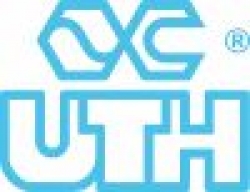 Annemarie Hillebrecht
Annemarie HillebrechtProcess engineer and head of technical center
UTH GmbH
Germany
Continuous milling is an economical and gentle method for processing technical rubber using two-roll plasticizer (TRP) technology. This process combines cracking, homogenizing and discharging in three zones along the continuous roll. The rubber specialized roll design provides the axial material transport under controlled temperature. The reproducible homogeneity of the material is adjusted by different speeds and frictions. The machine allows an automated process and easy maintenance. The benefits include viscosity reduction, a decrease in energy consumption of up to 50% and less floor space demand. Established in tire production, this technology is adaptable for various rubber processing needs and sustainable materials.
What the audience will learn
- How continuous milling contributes to efficient rubber processing for tire production
- How high-quality compounds with consistent material homogeneity can be achieved
- How this process can achieve energy and space savings
- How continuous milling ensures automated easy maintenance
- Where this solution can be applied
17:00
New developments and solutions for silica mixing and beyond
 Dr Lukas Hermeling
Dr Lukas HermelingR&D engineer
Harburg-Freudenberger Maschinenbau GmbH (HF Group)
Germany
New innovations in silica mixing, including the advanced PES7 rotor, are setting new standards in efficiency and durability. The PES7 rotor features optimized geometry for improved material flow, delivering better dispersion, reduced energy consumption, and minimized wear. Tandem mixing further enhances these benefits by combining stages for increased productivity and flexibility in production. These solutions not only ensure high-quality results but also lower operating costs by conserving energy and extending equipment lifespan. From silica mixing to broader applications, these advancements represent a leap forward in sustainable, efficient and cost-effective mixing technology.
What the audience will learn
- Higher silica content and the associated challenges
- Latest developments in the production of silica compounds
- New PES-7 rotor with improved properties for higher throughput
- Production of silica compounds in a tandem mixer
- Tandem mixer for energy and CO2 emissions savings
New York 2
Developments and innovations in materials and related processes - Day 2
09:00 - 17:25
Moderator
 Dr Keizo Akutagawa
Dr Keizo AkutagawaVisiting professor
Queen Mary University of London
UK
09:00
Comparison of different liquid phase mixing approaches
 Mengchen Ba
Mengchen BaR&D department manager
Ecombine Advanced Material Co. Ltd
China
This study conducts a comparative analysis of the performance of three mixing approaches under an identical formulation comprising multiple elastomers: traditional dry mixing (reference), single-step liquid phase mixing (Process A) and multistep liquid phase mixing (Process B). In contrast to traditional dry mixing, the liquid phase mixing compounds exhibit reduced hysteresis; furthermore, regarding tensile strength among the three processes, Process B demonstrates enhancements of 16% and 4% over dry mixing and Process A, respectively. When evaluating elongation at break, Process B shows a 17% improvement relative to the dry mixing process, while remaining comparable to Process A.
What the audience will learn
- Background of LPM technology
- Multistep liquid phase mixing process
- Possible problems in formulations comprising multiple elastomers
- Performance comparison of the three mixing approaches
- Features found in this study of the one-step liquid phase mixing approach
09:25
Higher sustainability in tire: adapting recipes to new raw materials
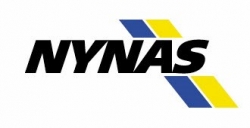 Carlo Silvestri
Carlo SilvestriSenior technical advisor
Nynas AB
Sweden
The tire industry is looking at raw materials with enhanced features to reach sustainability targets: their credentials are rooted in lower product carbon footprint (PCF), biogenic or circular feedstocks. The presentation will focus on a couple of different routes to enhance sustainability in a compound: one to use the same tire oils with a significantly reduced PCF (EVO product) and the other being the introduction of a biogenic oil, Nytex Bio 6200. EVO is a solution without any reformulation or re-approvals and Nytex Bio 6200 offers a 1:1 solution to conventional oils or (with small adjustments in the recipe) further enhances performance.
What the audience will learn
- Non-conventional raw materials
- Product carbon footprint
- Sustainability
- Naphthenic tire oils
- Bio oil
09:50
High-performance sustainable bicycle tire tread compounds
 Dr Nese Kaynak Akkanat
Dr Nese Kaynak AkkanatR&D chemist tire compounds
Specialized International GmbH
Germany
This presentation will explore the integration of sustainability in the development of high-performance bicycle tires. As manufacturers adopt eco-friendly practices, the challenge lies in creating tread compounds using sustainable or recycled materials without compromising performance. Since the tread compound is critical to a tire’s overall performance, balancing rolling resistance, grip and durability across varying temperatures and surfaces becomes crucial. Attendees will gain insights into the latest advancements in sustainable materials for bicycle tires and understand their impact on performance metrics like rolling resistance and grip. Specialized strategies for overcoming performance trade-offs will also be discussed.
What the audience will learn
- Sustainable and recycled material usage for the bicycle tire industry
- Impact of sustainable and recycled materials on bicycle tire performance
- Introduction to Specialized’s new S-Works Facility in Germany: advancing bicycle tire development
- How Nynas Nytex Bio 6200 influences tread compound performance in high-performance bicycle tires
- Bicycle tire tread formulations: integrating silica and carbon black fillers for optimal performance
10:15
Functionalized Li-BR in modern tire recipes: a game-changer for low rolling resistance tires
 Dr Eshwaran Subramani
Dr Eshwaran SubramaniSenior technical service engineer
Asahi Kasei Europe GmbH
Germany
The demand for functionalized Li-BR has surged over the last decade due to its effectiveness in achieving low rolling resistance (RR) in tires. This study highlights the performance enhancements that functionalized Li-BR can provide when paired with functionalized SSBR. Remarkably, even when combined with non-functionalized SSBR, Li-BR demonstrates significant improvements in tire performance compared to conventional high-cis-BR. Additionally, Li-BR promotes easier silica intake, higher silica incorporation and improved mixing efficiency, making it ideal for high-silica recipes. Effective silica dispersion, essential for winter tire traction and stiffness, is greatly supported by Li-BR, underscoring its importance in modern tire formulations.
What the audience will learn
- Learn the benefits of functionalized Li-BR
- Improve the rolling resistance of tire tread
- EV tires or energy effects tires
- Sustainable solutions
10:40 - 11:10
Break
11:10
Effect of multifunction process aids on NR-based silica compounds
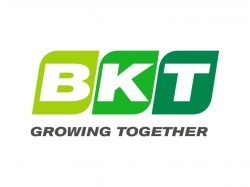 Dr Rohit Ameta
Dr Rohit AmetaHead, R&D
Balkrishna Industries Ltd (BKT)
India
In this research, multifunction process aids in natural rubber-based (NR) silica compounds are studied. NR is a non-polar rubber in nature whereas silica is the polar material. Accordingly, it couldn’t be mixed and dispersed easily in the rubber matrix. To address processing issues, a process aid is required. NR has a tendency toward high reversion during vulcanization over a prolonged time; anti-reversion chemicals are used to protect this high reversion issue. The main function of multifunction process aids is to achieve the properties of process aids and anti-reversion chemicals. Processing behavior, dynamic properties and physical properties have all been studied and are discussed in this paper.
What the audience will learn
- Multifunction process aids
- Reversion
- Physical properties
- Processing behavior
- Dynamic properties
11:35
Dispersion kinetics of carbonaceous materials during elastomer mixing
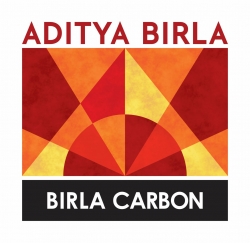 Dr Joe Hallett
Dr Joe HallettTechnical lead, Continua
Birla Carbon
UK
Obtaining cost-effective dispersion and distribution of reinforcing particles in elastomers is a prerequisite for compound performance and, often times, a limiting factor in material utility and adoption. In this study a new procedure is developed to track, quantify and discriminate the dispersion and distribution kinetics of reinforcing particulates during mixing with elastomers in a typical internal mixer. The procedure allows for unambiguous discrimination between different types of carbon blacks of various bulk colloidal properties. The procedure can be used to compare various other particulates of interest and differentiate between incorporation kinetics versus particle size effects.
What the audience will learn
- How particulates disperse into rubber during mixing
- How to define and measure the dispersion of particulates in elastomers
- How to track the kinetics of the dispersion and distribution process during mixing
- How different types of carbonaceous materials disperse and how to tune mixing procedures to accommodate them
- Limiting factors in dispersion and therefore performance
12:00
E-curing game-changing innovation with huge CO2 saving impact
 Warren Rudman
Warren RudmanExecutive vice president, curing presses
Harburg-Freudenberger Maschinenbau GmbH
Germany
HF has developed an electrical curing solution. Based on extensive simulations and testing, HF is running extensive trials and working with customers to provide individual solutions depending on customer requirements. The presentation shows the development process and explains the guiding principles that led HF to e-curing. The benefits of electric curing to HF’s customer base are highlighted in terms of energy savings, CO2 emission reduction and the opportunities the new technology offers for tire design and material usage.
What the audience will learn
- Less energy use per tire
- Immense reduction in CO2 emissions, up 100% of the curing shop by using renewable energy
- Temperature and pressure are independently controlled
- Improved tire quality due to more consistent temperature top to bottom
- Extended bladder life
12:25
Making it stick – SVHC-free tackifiers for demanding tack applications
 Dr Nancy Winchester
Dr Nancy WinchesterDirector, R&D, rubber and adhesives additives
SI Group
USA
Widely used phenolic tackifiers are coming under increased regulatory pressure. At the same time, the performance requirements of tires, especially for demanding applications, e.g. electric vehicles, become ever more challenging. Increased silica loadings in advanced tires make rubber-to-rubber bonding more difficult. As a leading supplier to the industry, SI Group has developed both a low residual monomer standard tackifier and an SVHC-free super tackifier, the latter showing optimized performance even in high-silica tread compounds. It also shows excellent tack retention in NR/BR rubber systems. A case study of selected new tackifiers will be presented and their application benefits discussed.
What the audience will learn
- An ultra-low residual monomer standard phenolic tackifier has been developed through process optimization
- The ultra-low residual monomer tackifier is a drop-in replacement for standard phenolic tackifiers
- An SVHC-free tackifier that shows superior performance in silica tread applications will be presented
- The SVHC-free tackifier has been successfully scaled up at SI Group's manufacturing facilities for customer sampling
- Advances in the development and performance of bio-based tackifiers
12:50 - 14:00
Lunch
Moderator
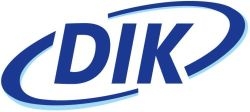 Prof Ulrich Giese
Prof Ulrich GieseManaging director
Deutsches Institut für Kautschuktechnologie eV (German Institute of Rubber Technology)
Germany
14:00
Functionalized low-Tg S-SBR and BR for high-performance tires
 Dr Sunkeun Kim
Dr Sunkeun KimProfessional
LG Chem
Republic of Korea
The tire industry is increasingly demanding high-performance materials to enhance low wear characteristics, excellent wet grip and low rolling resistance, driven by the need for improved safety and adherence to environmental regulations. LG Chem focuses on developing new functional solution-styrene-butadiene rubber (S-SBR) and butadiene rubber (BR) to achieve superior tire performance. These innovations not only enhance durability and fuel efficiency but also align with the industry's sustainability goals. This research demonstrates the potential of advanced materials for the tire industry to meet both market and environmental demands.
What the audience will learn
- Sustainability
- Structure-property relationships
- Cutting-edge polymerization techniques
- Tire performances
14:25
Sustainable aminic substances in silica-filled compounds
 Dr Cristian Oprisoni
Dr Cristian OprisoniApplication developer
Lanxess
Germany
This presentation introduces a novel aminic accelerator for state-of-the-art passenger car tires based on SBR/BR compounds with high silica content. Typically, aminic accelerators are used to enhance silica dispersion, activate silanization and accelerate sulfur vulcanization. The new substance presented offers improved safety and a more sustainable profile compared to currently used chemicals. It also delivers enhanced silica dispersion and superior dynamic mechanical properties, making it a promising alternative for the tire industry. This innovation aims to contribute to the development of more efficient and environmentally friendly tire manufacturing processes.
What the audience will learn
- Diphenyl guanidine is on the fast track to become a SVHC
- Many alternatives have yet to achieve full property spectrum and also be sustainable
- New compound Rhenocure DR has a safe HSE profile
- New compound Rhenocure DR can be of sustainable origin via mass balance
- Rhenocure DR improves the dynamic mechanical properties of rubber compounds
14:50
Passenger EV tire performance optimization through an integral approach: construction, tread pattern and compound
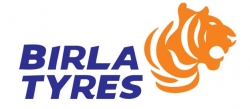 Dr Sarat Ghosh
Dr Sarat GhoshVice president R&D/CTO
Himadri Speciality Chemical Ltd/Birla Tyres (DBRL)
India
Optimization of passenger EV tire performance by connecting three dots: tire construction, tread pattern and compounds. The major challenges are high instant torque, higher weight and longer braking distance. The unique requirements include a stronger carcass, higher durability, low RR, reduced noise and high grip. A reinforced shoulder, multilayer carcass and stiffer sidewall region provide a higher structural strength. High grip and improved aquaplaning, reduced noise and a lower RR are achieved by an asymmetric directional tread pattern, variable pitch with special sipes and a larger footprint with uniform pressure distribution respectively. Blends of natural rubber carbon black and silica silane compounds together with a resin system provide robust, durable, low RR and high grip tread. A resin-reinforced carbon silica sidewall and apex compounds provide a higher stiffness.
What the audience will learn
- Unique properties of NRCB and SSBR silica silane composite combinations for robust low RR tread
- Balancing between wet and dry grip and low RR with a combination of tread pattern and compound
- Wet grip optimization by a resin system combination without sacrificing rolling resistance
- Tread stiffness optimization through pattern design for better traction and handling with low RR and reduced noise
- Higher structural strength and sidewall stiffness for tire longevity and durability
15:15 - 15:45
Break
15:45
The impact of performance resin to improve wet grip for PCR tire tread
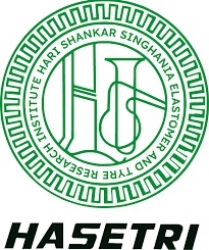 Biswajit Shee
Biswajit SheeSenior manager
HASETRI
India
Recent advances in PCR tire tread compounds have identified performance resins as promising additives to enhance wet grip while maintaining rolling resistance at a comparable level. This study investigates the impact of two resins on the performance characteristics of a radial passenger car tire tread compound, with special emphasis on wet grip and rolling resistance. Two performance resins, differing in aromaticity, molecular weight and softening point, were evaluated in a silica-reinforced PCR tread cap formulation. The compounds were prepared and characterized against a control compound for physical, dynamic, mechanical, wear and fatigue resistance.
What the audience will learn
- A brief introduction and motivation for this study
- Characterisation of Resins
- Design of experimental compounds with different performance resins
- Characterization of developed compounds
- Result and discussion
16:10
Functionality versus molecular weight of SSBR for better performance
 Dr Hanjoung Cho
Dr Hanjoung ChoPrincipal researcher
Kumho Petrochemical Co. Ltd
Republic of Korea
Functional SSBR has excellent properties such as fuel efficiency characteristics and silica dispersion, which is why it has increasingly been used in tire development recently. Among the compounding characteristics, hysteresis energy loss shows good results with high functionality and high molecular weight. To evaluate the contributions of functionality and molecular weight to hysteresis, this study indirectly compared the compounding characteristics between functional SSBR and ultra-high molecular weight SSBR.
What the audience will learn
- Functional SSBR
- Low Tg SSBR
- Ultra-high Mw SSBR
- SSBR
- Compounding properties
16:35
New modified natural rubber for enhanced tire tread performance
 Hai Li
Hai LiR&D director
CheeShine
China
Sustainable alternatives to petroleum-based synthetic rubber are essential for the circular economy and the development of green tires. The presentation will introduce the application of new modified natural rubber as an alternative to SSBR in green tires. The results show that the modified natural rubber tire tread compound has better processing performance and excellent physical and mechanical properties. The special-modification rubber compound has good silica dispersion and lower rolling resistance. The new modified natural rubber has great application potential to replace synthetic rubber in green tire tread compounds.
What the audience will learn
- New modified natural rubber to replace SSBR for enhanced tire tread performance
- The modified natural rubber can replace SSBR with good processability and excellent physical and mechanical properties
- The modified natural rubber can replace SSBR with good silica dispersion and lower rolling resistance
- The new modified natural rubber has great application potential in green tires
- A brief introduction of CheeShine and its innovative R&D
17:00
Balancing in-rubber performance with R&D and pyrolysis process optimization
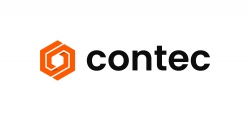 Krzysztof Wróblewski
Krzysztof WróblewskiCEO
Contec SA
Poland
The consistency of recovered carbon black (rCB) is a key challenge for its commercialization in circular applications. Research and development (R&D) plays a vital role in addressing this by refining production processes and analyzing rCB properties. Quality control, particularly in-rubber performance evaluation, is essential for understanding and enhancing rCB quality. This presentation showcases case studies demonstrating how key quality features affect rubber performance stability and how these features can be effectively managed through optimized production processes, ensuring rCB meets market demands with improved and consistent quality.
What the audience will learn
- Case studies showcasing the impact of feedstock, pyrolysis and finishing processes on rCB quality
- Selected applications of rCB in rubber industry
- Research and development as foundations of circularity in tire manufacturing
Five Continents
Analyzing and mitigating TRWP: implications of Euro 7
09:00 - 17:25
Moderator
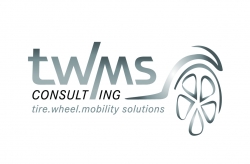 Prof Günter Leister
Prof Günter LeisterCEO
twms-consulting
Germany
09:00
Chemical fingerprint for environmental detection of tire rubber emissions
 Nick Molden
Nick MoldenChief executive officer
Emissions Analytics
UK
Over 2.3 billion tires are produced globally per year, with an ever-increasing complexity of chemical additives to optimize safety and performance. Greater understanding of the chemicals and polymer degradation products allows the environmental impact of tires to be better understood. This presentation shows an untargeted pyrolysis GC-MS method to analyze tire rubber for environmentally important chemicals to develop a comprehensive tire chemical source profile – 340 tires from light, medium and heavy-duty tires from Europe. The tire antioxidant 6PPD is the only chemical detected in every tire, and the presentation will show how a single chemical tracer for tire wear is insufficient.
What the audience will learn
- Detailed organic chemical composition of European tires
- Chemical fingerprint that can be used to measure tire emissions in the environment
- Why a single chemical trace is ineffective for identifying tire emissions
- Comparison of chemical composition between light, medium and heavy-duty tires in Europe
- Understanding degradation products of tire compounds
09:25
Assessing tire abrasion: regulatory requirements and key findings from experimental tests
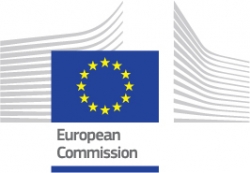 Dalia Broggi
Dalia BroggiProject manager - scientific research
European Commission
Italy
Tire wear stems from friction between tires and road surfaces and significantly contributes to environmental pollution. Tire abrasion is a key metric for assessing tire wear and its environmental impact. A recent amendment to UNR117 sets the procedure to evaluate abrasion performance for C1 tires. An extensive market assessment is ongoing to propose abrasion limits for C1 tires. Simultaneously, work on evaluating the method’s suitability for C2 tires has commenced. In this context, the European Commission's Joint Research Centre is conducting independent tests on various C1 and C2 tires. The presentation summarizes some key findings from the JRC testing campaign.
What the audience will learn
- Tyre abrasion metrics
- UNR117 abrasion standards
- Tyre wear market assessment
09:50
Refined characterization of tire road wear particle emissions
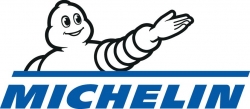 Frederic Biesse
Frederic BiesseSenior fellow for tire physics and modelization
Michelin
France
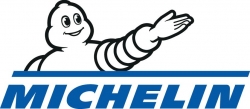 Pierre Schaal
Pierre SchaalCross-functional coordinator, hygiene and environment issues
Michelin
France
Michelin is actively working to reduce the environmental impact of tires. Amongst other important levers like energy efficiency, longevity and quantity of materials used, TRWP is a key lever in order to achieve its goals. Measuring TRWP quantity and size distribution – and particularly the small particles (below 10 µm) – is a technical challenge. The improvement of characterization methods used in Michelin's measurements enables the further refinement of the evaluation of TRWP emissions, reducing the bias faced by many studies. This and other progress will be presented.
What the audience will learn
- Imoprtance of understanding and analysis of TRWP emissions
- Difficulties in capturing and analyzing TRWP
- The experimental on-vehicle setup developed by Michelin to capture real-life TRWP
- The analysis process developed and its latest refinement (2024)
- Results obtained through the updated process
10:15
Characterization of tire road wear particles generated on asphalt pavement
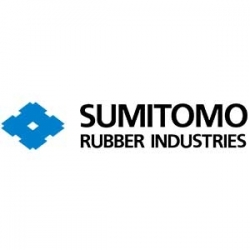 Dr Shinya Nakano
Dr Shinya NakanoManager
Sumitomo Rubber Industries
Japan
This presentation covers the methodology to analyze tire and road wear particles (TRWP) generated on asphalt pavement and show the effect of road conditions on TRWP. Density separation and TGA were performed on TRWP obtained at different temperatures and road roughness levels in order to investigate the ratio of components originating from rubber and road. Particle size distribution was calculated based on optical microscope observation and discussed in terms of road conditions. This research highlights the necessity of addressing both the tire and road surface aspects to tackle the TRWP issue.
What the audience will learn
- How to separate TRWPs from collected wear samples
- How to evaluate the ratio of TRWPs components
- How to calculate size distribution from images obtained by optical microscope
- How the road temperature affects TRWPs component and size distribution
- How the road roughness levels affect TRWPs component and size distribution
10:40 - 11:10
Break
11:10
Evaluation of tire road wear particles under real conditions
 Dr Benjamin Oelze
Dr Benjamin OelzeGroup leader global tire testing (GTT), test method development wear (CC 61202)
Continental Tires
Germany
In the joint research project OLRAP between TU Braunschweig (TUBS) and Continental Reifen Deutschland (Continental), funded by MWK Niedersachsen, a study to measure and analyze tire road wear particles under real conditions was carried out. The overall objective was to develop a process that can quantify tire wear particles under various conditions (like driving style) during their genesis. For this purpose, a test vehicle was equipped with various measuring devices, including for example commercially available particle sensors (PM1/2.5/10/100). Furthermore, tire road wear material was collected for laboratory analysis making use of a marker technology.
What the audience will learn
- How to collect and measure TRWP under real world conditions on a test vehicle
- Correlation of acceleration conditions to particle size distribution
- Particle size fingerprint measurements using PM 1/ 2.5/ 10/ 100 sensors online
11:35
Bridgestone’s efforts for TRWP
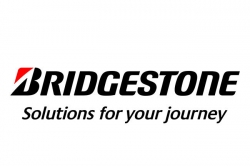 Dr Yasuhiro Shoda
Dr Yasuhiro ShodaMaterial expert
Bridgestone Europe
Italy
Tire and road wear particles (TRWP) are the result of friction between the tire and the road surface, which is essential to secure a safe and comfortable journey. It is a complex issue impacted by many factors, including road conditions, weather, vehicle and tire characteristics and driving behavior. Bridgestone recognizes the need to understand and address TRWP. This presentation reports the method for efficiently collecting TRWP and its characterization.
What the audience will learn
- Bridgestone's stance for TRWP
- Bridgestone's efforts for TRWP
- BS approach for TRWP
- Understanding TRWP
- Addressing TRWP
12:00 - 12:50
Panel Discussion - Euro 7 – implications and challenges for the tire industry
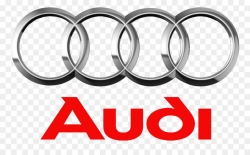 Sebastian Gramstat
Sebastian GramstatSenior expert
Audi
Germany
 Frederic Biesse
Frederic BiesseSenior fellow for tire physics and modelization
Michelin
France
 Prof Thomas Bachmann
Prof Thomas BachmannDirector of automotive engineering group
Technische Universität Ilmenau
Germany
 Malte Wohlfahrt
Malte WohlfahrtGlobal R&D director
Synthos
Germany
 Dr Ulf Sandberg
Dr Ulf SandbergSenior research leader
Swedish National Road and Transport Research Institute (VTI)
Sweden
Guenter Leister, CEO, twms-consulting, Germany
Moderators:
Guenter Leister, CEO, twms-consulting, Germany
Günter Leister, CEO, twms-consulting, Germany
12:50 - 14:00
Lunch
Moderator
 Nick Molden
Nick MoldenChief executive officer
Emissions Analytics
UK
14:00
Tire wear and TRWP experimental techniques
 Stefano Pontoglio
Stefano PontoglioR&D testing engineer
Pirelli Tyre
Italy
 Dr Andrea Ronchi
Dr Andrea RonchiGroup leader R&D material testing innovation
Pirelli Tyre
Italy
The upcoming tire abrasion regulations and the increasingly challenging sustainability goals call for the development of tires with lower environmental impact. Tire wear (TW) optimization is one of the challenges that the tire industry has to face, with increasingly robust methods to evaluate mileage, wear shape and particle emissions. To achieve this goal, reliable laboratory testing methods are essential to predict the wear that can be observed in real-life conditions and ensure the quality and durability of tires. This presentation will focus on today’s development and state-of-the-art experimental techniques used to measure TW and TRWP.
What the audience will learn
- Tire wear measuring techniques
- Tire road wear particles measuring techniques
- Indoor versus outdoor measurements
- Tire testing
- Tire emission regulations
14:25
Tire road wear particles and their collection
Dr Hiroshi Mouri
Rubber consultant
formerly at Bridgestone
Japan
Rubber consultant
formerly at Bridgestone
Japan
The first part of the present paper reviews the fate of tire and road wear particles (TRWP) based on the findings from the study sponsored by the Tire Industry Project (TIP) since 2005. The results have been published in ISO standards. The authors found additional studies conducted during the period, and added a new insight to the fate of TRWP. The second part of the paper discusses a new methodology to collect TRWP in an efficient way to satisfy the need to accelerate scientific understanding of the potential risks associated with TRWP.
What the audience will learn
- Fate of tire wear particles
- Collection of tire debris
- Tire Industry Group
- Airborne particles
- Watershed
14:50
Tire wear and tire road wear particle measurements at inner drum test benches of KIT
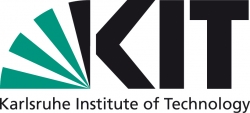 Dr Martin Gießler
Dr Martin GießlerHead of wheel-tire-road research group
Karlsruhe Institute of Technology
Germany
The Institute of Vehicle System Technology at the Karlsruhe Institute of Technology (KIT) analyzes the influences of different load and track conditions on tire road wear particles (TRWP) within an inner drum test rig. Together with Fraunhofer ITWM, KIT is developing a standardizable method for predicting tire wear based on test bench tests and simulations. The presentation will summarize the motivation for tire testing on wear and TRWP. After a brief introduction to the testing facilities with tire wear testing setup, the presentation focuses on KIT's testing methods for TRWP measurements. Some example results on the influence of operation conditions on TRWP will be presented. In addition, an overview of the findings and the current state of the tire wear testing project will be given.
What the audience will learn
- Tire-road-wear tests at an inner drum: test setup including particle collection, test procedure and results with a focus on particle analysis
- RAMUS project: the development of a method as a combination of simulation and tire tests to predict tire wear rate
15:15 - 15:45
Break
15:45
Optimizing indoor tire abrasion tests on sandpaper
 Prof Günter Leister
Prof Günter LeisterCEO
twms-consulting
Germany
Indoor tire wear tests wear out the tire and the drum surface. Tire wear machines often use sandpaper on their drums, which makes the tests less realistic. Sandpaper must be replaced regularly to accurately reproduce abrasion tests. The Euro 7 regulation allows for these tests to be carried out on indoor test benches. This study develops a method based on the ETRTO method that significantly reduces the number of reference tires and total measurement time.
What the audience will learn
- The consequences of Euro 7
- Testing of emission of tire road wear particles
- New, efficient method for indoor wear measurement
- The influence of sandpaper on indoor tire wear testing
- Sandpaper quality estimation
16:10
A novel measurement methodology for robust tire wear particle emissions
Test engineer
DLR
Germany
Developing a standardized and repeatable method for measuring tire road wear particle (TRWP) emissions is challenging due to the many influencing factors. DLR introduces a novel three-step approach: generation, collection and analysis for measuring TRWP emissions, applied in a chassis dyno setup using an innovative housing collection system. This system is designed to reduce the influence of external parameters which directly affect TRWP emission results. By defining accurate boundary conditions for each step, the method provides a robust framework for repeatable and consistent TRWP emissions data, leading to more reliable comparisons between different tires and a trustworthy foundation for component testing.
What the audience will learn
- Influence of collection and sampling systems on TRWP measurements; the importance of geometry, air speed and instrument properties
- Advantages of the novel housing collection system in reducing background particle interference and increasing collection efficiency
- Optimizing particulate matter sampling lines for TRWP measurements by minimizing errors through controlled isokinetic conditions
- Stability and repeatability in TRWP measurements using high-resolution real-time monitoring with several instruments
- Insights from PM10 and PM2.5 emission factors of TRWP across several WLTC cycles
16:35
Tire particulate emissions – an interdisciplinary research challenge
 Dr James Knowles
Dr James KnowlesSenior lecturer in dynamics and control
Loughborough University
UK
Tires are becoming a leading source of particulate matter emissions from modern vehicles, with a significant body of literature devoted to experimental measurements that quantify the scale of emissions from an individual tire level up to city-wide. As the ultimate destination for these emissions is the environment and its inhabitants, this presentation will highlight the need for future tire emissions research to adopt a more interdisciplinary approach than is evidenced in current literature. Alongside researchers in environmental sciences and medicine, the presentation defines future research questions that can help ensure future pollution effects – rather than just emissions – are minimized.
What the audience will learn
- What is currently known about how tire particulates are created and dispersed
- What is currently known about the environmental impacts of tire particulates
- What is currently known about the health impacts of tire particulates
- What knowledge gaps exist around tire particulate creation, dispersion and impact on the environment and human health
- What interdisciplinary work is needed to address these knowledge gaps
17:00
Tire emissions – how brake particles influence the measurements
 Miles Kunze
Miles KunzeResearch assistant
Technical University Ilmenau
Germany
There are various influencing parameters that must be taken into consideration when measuring non-exhaust emissions. Therefore, measured data must be treated carefully regarding aerosol composition and emission sources to clarify emission behavior in different driving situations. This study highlights the difficulties and issues when measuring tire and road wear particles (TRWP), comparing the emissions from the front and rear axles. In this case, brake particles become one of the strongest influencing parameters that must be taken into consideration for analyzing emission behavior.
What the audience will learn
- Proper set up for tire emission measurements
- Influences on particle measurements
- Emission behavior of tires
- A comparative analysis of the emission behavior of the front and rear axles
- Difficulties when comparing front and rear axle emissions
Casablanca
Modeling, simulation, testing and analysis - Day 2
09:00 - 17:25
Moderator
 Dr Christian Bachmann
Dr Christian BachmannSenior manager tire technology
fka GmbH
Germany
09:00
F&M prediction using AI technology and virtual tire development
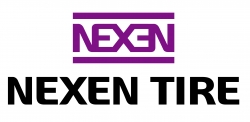 Jongchan Kim
Jongchan KimVehicle dynamics
Nexen Tire Co. Ltd
Republic of Korea
Recently, interest in virtual development has been increasing in OE tire development. Nexen Tire has been preparing for virtual development for the past 10 years, and is currently showing some results in OE development projects. AI prediction technology is one of them, and this presentation introduces Nexen's AI prediction technology for force and moment characteristics, which are key to tire virtual development, and how to utilize it in vehicle dynamics simulation.
What the audience will learn
- Nexen AI prediction strategy for F&M characteristics
- Nexen AI prediction level for F&M characteristics
- Application of AI prediction to virtual tire model
- Key issues in AI prediction model development
- Nexen AI model development direction for F&M characteristics
09:25
Advances in physical modeling applied to tire and vehicle simulations
Vehicle dynamics researcher and company CEO
UniNa/MegaRide
Italy
This presentation aims to provide scientific updates from the laboratories of the tire and vehicle dynamics research group of the University of Naples, before they become new features of the simulation software developed by the group's spin-off companies. The main research topics concern the role of road roughness analysis and reproduction in real-time comfort and handling models, and with tire wear and degradation mechanisms, influenced by viscoelasticity evolution and affecting contact friction and thermodynamics. Each topic comprises the experimental, parameters identification and model implementation phases.
What the audience will learn
- The role of road roughness in friction, both in local contact phenomena and in ride dynamics
- How the tire wear model can be used for racing analysis and for particulate predictions in sustainability scenarios
- Tire models as a mix of integrated physical modules, from thermodynamics to wear, from viscoelasticity to friction
- Tire viscoelasticity analysis with non-destructive innovative methods, applied to performance optimization and quality control
- How scientific activities evolved in the team's history of tech transfer, from the lab environment to the market
09:50
The latest modeling and testing developments at Jaguar Land Rover
 Jan Prins
Jan PrinsTechnical group leader
Jaguar Land Rover (JLR)
UK
 Sujan Dinesh
Sujan DineshSME physical tyre model
Jaguar Land Rover
UK
Overview of the latest modeling and testing developments at Jaguar Land Rover, with a focus on developments made since last year's presentation in 2024.
What the audience will learn
- Approach to tire modeling in JLR
- Approach to tire testing in JLR
- The introduction of the CDTire type of tire model into JLR
10:15
Indoor testing of tires in wet conditions: a comparison study
 Carlo Lugaro
Carlo LugaroResearch engineer
Siemens Digital Industries Software
Netherlands
 Jonathan Darab
Jonathan DarabOperations director
Global Center for Automotive Performance Simulation (GCAPS)
USA
Indoor tire testing facility developments offer the opportunity to accurately measure the tire response in wet conditions in the laboratory. Tire specifications of different sizes and constructions have been recently tested under comparable conditions. The results of these tests are analyzed, making use of both physical and semi-empirical models. Moreover, the measurements are used to identify the parameters of the recently developed wet module extension of the MF-Tyre/MF-Swift model. This model is applied in vehicle dynamic simulations to study the effect of wet road tire behavior on vehicle dynamic performance.
What the audience will learn
- Tire and vehicle dynamics
- Indoor testing of tires in wet conditions
- The effect of water on the tire response
- How different tire constructions can affect the response on wet roads
- How the tire response on wet road affects the vehicle dynamics
10:40 - 11:10
Break
11:10
Tire NVH prediction based on sizes and pattern shape using CNN and ANN program
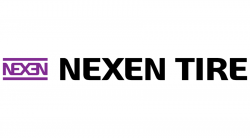 Dr Sungwook Hwang
Dr Sungwook HwangNVH supervisor
Nexen Tire Co. Ltd
Republic of Korea
Requirements for vehicle noise reduction result in the increasing importance of tire NVH design. Nexen has recently developed an AI-based NVH virtual prediction tool using CNN and ANN theories, utilizing MATLAB. In this presentation, there are correlations of virtual NVH prediction and real test results which can be used for guidance in noise reduction.
What the audience will learn
- NVH AI prediction for tire size and structure
- NVH mechanism according to tire size
- NVH design process for OE development
- Virtual prediction for tire NVH
- The guide for the NVH design process
11:35
Analysis of self-excited vibrations by combining simulation and testing
 Prof Dirk Engel
Prof Dirk EngelProfessor
HAW Hamburg
Germany
The non-linear tire slip response, characterized by a peak friction and subsequent decay, makes the wheel system, in specific operating conditions, a marginally stable system: self-excited vibrations are produced. Typical examples are longitudinal vibrations of the powertrain (sometimes also referred to as power-hop) and lateral vibrations of the tire in extreme understeer or oversteer situations. To study this phenomenon, different measuring and modeling methodologies have been recently developed. This presentation reviews these methodologies and demonstrates how testing and modeling can leverage each other to produce a consistent framework to approach the self-excited vibration problem.
What the audience will learn
- Tire-road interaction
- Tire slip response
- Self-excited oscillations
- Simulation
- Testing
12:00
Truck tire thermal analysis for performance optimization and predictive modeling
 Francesco Zito
Francesco ZitoMathematical model engineer
Prometeon Tyre Group
Italy
 Michele D'Inverno
Michele D'InvernoVehicle application and integration engineer
MegaRide
Italy
In the tire industry, the importance of the thermal behavior of a tire and its impact on key performance metrics such as durability, dynamic behavior and rolling resistance is well known. To evaluate temperature at crucial points of the tire, experimental activities were conducted using an innovative indoor methodology with embedded vulcanized sensors. The collected data, besides the thermal performance evaluation of different tread compounds, supported the validation of a thermal prediction model for truck tire temperatures in rolling conditions, developed in collaboration with Megaride.
What the audience will learn
- How temperature affects key tire characteristics such as durability, dynamic behavior and rolling resistance
- The use of embedded vulcanized sensors for accurate temperature measurement in critical tire areas during testing
- The new indoor methodology used to assess thermal performance across different tread compounds
- How real-time temperature data is used to validate a predictive model for truck tire temperatures in rolling conditions
- Insights into how collaboration with Megaride contributed to enhancing the thermal prediction model, enabling more precise tire performance forecasts
12:25
Predictions of dynamic-mechanical response of tire tread compounds
 Arsen Tskhay
Arsen TskhayEngD candidate
Apollo Tyres
Netherlands
The dynamic-mechanical response of tire tread is a highly complex problem. The non-linear nature of filled elastomers and the real-life working conditions of tires, such as various temperatures, high strains and frequencies, present significant challenges for testing and prediction. This presentation explores the results of dynamic mechanical analysis (DMA) of tire tread formulations with a focus on dynamic strain sweeps. By varying individual ingredients in the formulation and their loadings, effects on storage and loss modulus are investigated. Based on obtained experimental data, existing models are used and compared to predict and simulate the storage and loss modulus of tire treads.
What the audience will learn
- Challenges of dynamic-mechanical response of filled rubbers
- Impact of material composition and testing conditions on storage and loss modulus
- Challenges of modeling complex behavior of filled elastomers
- Dynamic strain sweeps and their limitations
- Value of combining DMA testing and modeling for tire applications
12:50 - 14:00
Lunch
Moderator
 Prof Dirk Engel
Prof Dirk EngelProfessor
HAW Hamburg
Germany
14:00
Exterior noise reduction of tires using active control
 Dr Dan O'Boy
Dr Dan O'BoySenior lecturer in structural dynamics
Loughborough University
UK
Vehicle external noise is typically controlled through legislation, for example ISO 362. Future electric vehicles are relatively heavy and thus have wider tire width. As the tire noise is the dominant external noise from the vehicle, it is important to look at methods of reduction. Improvements in active noise control have been made for interior noise, which has an arguably simpler transmission path. The exterior noise, and in particular the lower-frequency modal response, is examined for active control implementation, using reference microphones and directional sound sources. Complications such as the horn amplification, random excitations and scattering are covered.
What the audience will learn
- Exterior noise challenges for electric vehicles, including urban planning and safety
- Active control limitations and why the success of interior control isn't straightforward to replicate outside of the vehicle
- Novel directional sound sources as alternatives to existing speaker technologies, using non-linear sources
- Exterior sound reduction possibilities for urban driving, where building accommodation closer to roads is increasing
- Reductions of exterior noise can be shaped according to direction of travel and thus linked to safety of pedestrians
14:25
Dielectric and mechanical response of filled elastomers: frequency-temperature relationships
 Kirsty Rutherford
Kirsty RutherfordPhD student
Queen Mary University of London
UK
Assessing the frequency-dependent behavior of elastomers is crucial for evaluating the rolling resistance and wet grip properties of tires. Traditionally, dynamic mechanical analysis has been employed to measure this behavior but a standard DMA is unable to reach the necessary frequencies for evaluating tire performance. This can be addressed through time-temperature superposition; however, this introduces additional processing errors, particularly with filled elastomers. Alternatively, impedance spectroscopy offers a quick non-destructive method to evaluate the high-frequency behavior but has limitations for measuring highly-filled conductive carbon black compounds. This work compares both methods and examines the relationship between carbon black colloidal properties and frequency-dependent behavior.
What the audience will learn
- Both dielectric and mechanical methods can measure α-relaxation processes and yield identical shift factors for William-Landel-Ferry (WLF) relationships
- Variations in peak positions in tan delta/dielectric loss reveal important differences in the dimensions of the two measurements
- The role of structure and surface area of the fillers on the frequency-dependent behavior of the elastomer composites is revealed
- Dielectric behavior measured at high strains follows Guth-Gold relationships
- Surface area of carbon black dominates the broadening of the tan delta/dielectric loss
14:50
The way to zero prototypes through a driver-in-the-loop approach
 Ulf Kossenjans
Ulf KossenjansTest coordinator
EDAG Engineering GmbH
Germany
In the rapidly changing automotive industry, virtual tire methodology is the solution to catch up with front loading of development activities. This presentation gives insights into the way to zero prototypes through a driver-in-the-loop approach. The concept of 'feeling the reality' is discussed and how it tackles the current challenges in simulator use. The simulator center is introduced and how its cutting-edge technology enables model-based tire development targeting dynamics and NVH attributes. An outlook on possible hardware-in-the-loop installations in combination with dynamic simulator technology is given.
What the audience will learn
- How to accelerate tire and vehicle development processes by transitioning from physical prototypes to advanced virtual simulations
- How to improve attribute setting like handling and NVH by linking human feedback from dynamic simulations with objective tire characteristics
- How to align a productive definition process from overall vehicle targets to tire and wheel system aspects
- How to enhance the spectrum of assessability regarding NVH targets by unique simulation equipment
- How to contribute to a more sustainable development via resource efficiency, cost savings and a reduced carbon footprint
15:15 - 15:45
Break
15:45
Prediction of elastomer properties using convolutional neural networks
 Dr Dengpeng Huang
Dr Dengpeng HuangAssistant professor
University of Twente
Netherlands
To predict the elastomer properties from its microstructures, material models in different scales have been developed ranging from the molecular level to the macro level. However, the application of these models is limited by either the computational costs or their accuracy. Efficient but accurate modeling is still missing. Due to its promising prediction performance, machine learning provides a suitable alternative to traditional methods. In this study, the tensile properties of elastomers are predicted from the expanded TEM images using convolutional neural networks (CNN). The CNN model shows good accuracy and efficiency in prediction.
What the audience will learn
- Microstructures of carbon black (CB) fillers
- Tensile properties of elastomers
- Design of convolutional neural networks (CNN)
- Regeneration of the TEM images of CB-filled rubber
- Prediciton of material properties using the CNN-based model
16:10
Impact of thermodynamics on tire-brake interaction and vehicle safety
 Andrea Stefanelli
Andrea StefanelliPhD student
University of Naples Federico II
Italy
The interaction between brakes and tires is essential for vehicle safety and performance. This study presented by Brembo and the University of Naples examines how thermodynamic changes in tires affect safety systems like ABS and ESC. By comparing simulated and experimental data, the research reveals how braking and tire performance shift under different conditions. A central focus is on MF Tire 5.2 and 6.2 models, showing how thermodynamic factors influence ABS in both longitudinal and lateral maneuvers. Brembo’s expertise enhances the findings, providing valuable insights into braking and steering dynamics, crucial for future advancements in vehicle safety and performance optimization.
What the audience will learn
- How thermodynamic changes in tires impact vehicle safety systems like ABS and ESC
- The relationship between braking performance and tire behavior under different conditions
- Influence of thermodynamic factors on vehicle handling and stability during maneuvers
- Key insights into optimizing braking and steering dynamics for improved safety
- Importance of understanding tire-brake thermal interaction for future vehicle performance advancement
16:35
Tire design and performance optimization through virtual technology
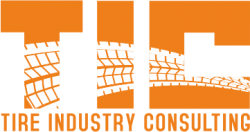 Haluk Kizilay
Haluk KizilayManaging director
TIC – Tire Industry Consulting
Germany
New product development (NPD) is a key process for all tire groups and NPD time is crucial. Virtual technologies enable the launch of world-class products faster and more cost-effectively than ever. TIC developed a unique 'virtual technology implementation' concept. It would be useful for all tire manufacturers to have an efficient and effective virtual technology process. TIC's key motto is 'Speed to market with right solution and innovation'. The presentation's main points are how to establish virtual technology, how to start simulation, tire engineering enhancement, model validation and verification and other important points.
What the audience will learn
- The latest technical challenges in smart tire design and development
- How to establish an effective NPD process by using virtual techniques
- How to create a winning technical team for smart tire development
- Holistic view for smart tire new product development through virtual technology
- Virtual model validation and verification and important points
17:00
Aerodynamic impact of tire shapes, particularly on electric vehicles
 Alejandro Martinez
Alejandro MartinezIndustry process expert
Dassault Systèmes
Sweden
As the automotive industry increasingly shifts toward electrification, minimizing vehicle drag becomes essential to enhance autonomy range and meet consumer expectations. Additionally, a recent European regulation (WLTP) requires car manufacturers to provide reliable emissions values for all the vehicle configurations, emphasizing the relevance of achieving accurate drag results. Among the largest contributors to the overall drag of the vehicle are the tires. This presentation leverages PowerFlow’s simulation capabilities to explore how tire shape differences can affect aerodynamics and force coefficients, particularly with clean underbody designs like in electric vehicles.
What the audience will learn
- PowerFlow’s unparalleled simulation capabilities for rotating tire using the immersive boundary method
- Aerodynamic effects of tires on global vehicle aerodynamics
- Relevance of tire shape and geometric details for vehicle’s autonomy range
- Differences in interaction of the tire wake with EV and ICE underbody design
- Accentuated impact on EV lift coefficient as a result of the underbody differences